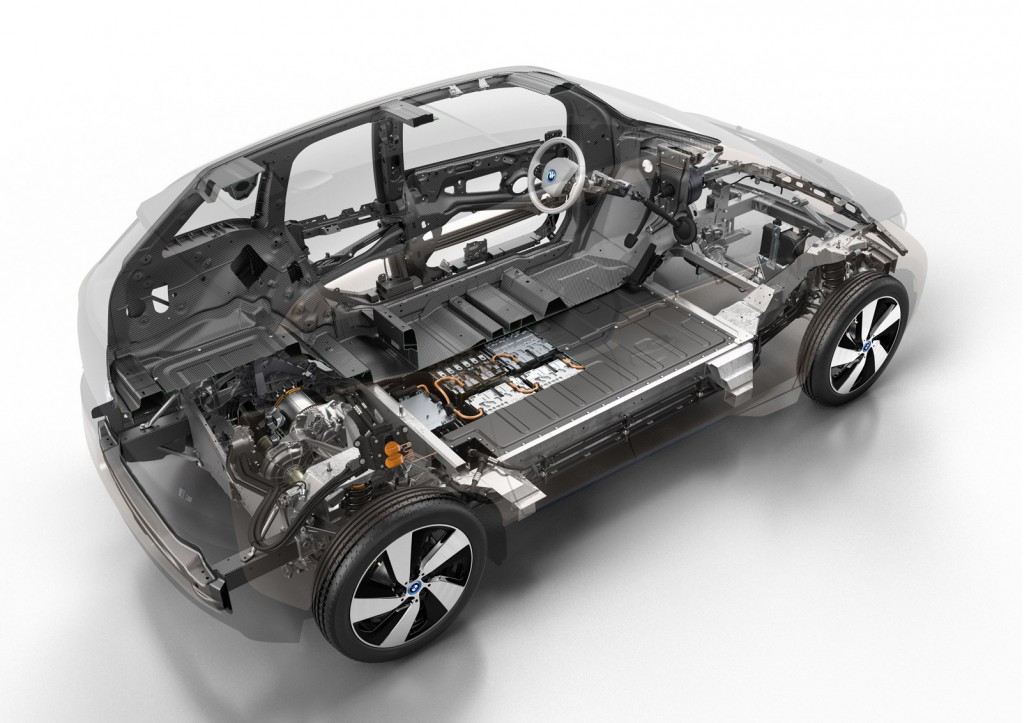We'll finally see an undisguised 2014 BMW i3 electric car in about two weeks.
But, this week, BMW released not only a few technical specifications for the powertrain but also some details of the car's advanced connectivity and navigation systems.
First, the car has its own cellular connection--as do many cars--but it uses its communications abilities in some new and interesting ways.
The suite of services and apps is grouped under the umbrella of BMW ConnectedDrive, a system already offered on other BMW vehicles.
Apps for all situations
Owners can share information with their i3 electric cars via a smartphone app called BMW i Remote. Those might be destinations to enter into the navigation system, commands to pre-heat or pre-cool the cabin, or battery charging instructions.
Another app provides walking directions from wherever the car is parked to a driver's final destination.
BMW also claims a world first for the car's navigation system, which provides intermodal route guidance--not only driving, but also public transport and walking--for the fastest or most energy-efficient ways to get between two locations.
Focusing on range
The Range Assistant app will advise the driver if a destination would be more safely reached by driving in the more efficient Eco Pro mode.
Like most electric cars, the BMW i3 navigation includes the location of charging stations--but it can also route the driver through a station as part of the route calculation.
Interestingly, that range and route calculation actually occurs on a BMW computer system, not locally in the car, with the results transmitted back to the i3 once they're computed.
Edging toward autonomy
Perhaps the most interesting facets of the BMW i3 are its many electronic safety and driving systems.
They include:

2014 BMW i3
- Active Cruise Control: Adaptive cruise isn't new, but the BMW system includes a Stop & Go function that can brake at up to the car's full braking ability, down to 0 mph and back up to highway traveling speeds.
- Traffic Jam Assistant: This may be the most interesting feature, though we'll have to wait to find out if it's offered in the U.S. market (liability lawyers, y'know). This lets the car pull away from a stop, steer, and brake in low-speed urban traffic--a feature previewed at the August 2011 launch of the BMW i3 Concept.
- Parking Assistant: The automated parallel parking system controls not only the steering, but also the accelerator and brakes--making this fully automated parking.
- Park Distance Control: This is a more standard proximity alert system, which can be supplemented by a rear-vision camera as well.
- Speed Limit Info: This displays the speed limits prevailing on the road where the car is traveling at any given moment, working together with the navigation system.
Borrowing other BMWs
BMW notes that its data from the MINI E and BMW ActiveE electric-car fleet tests revealed that the average distance traveled was 30 miles a day.
But the carmaker recognizes that some drivers may need to cover distances beyond the i3's electric range.
Its 360 Electric program lets owners arrange to borrow other vehicles from the company's line for occasional longer trips--a service also offered by Nissan and Fiat, among other electric-car makers.
There'll be much, much more to come on the BMW i3 very soon.
Meanwhile, this may provide food for thought for those who want to drive all electricity in a technically advanced vehicle.
_______________________________________________













